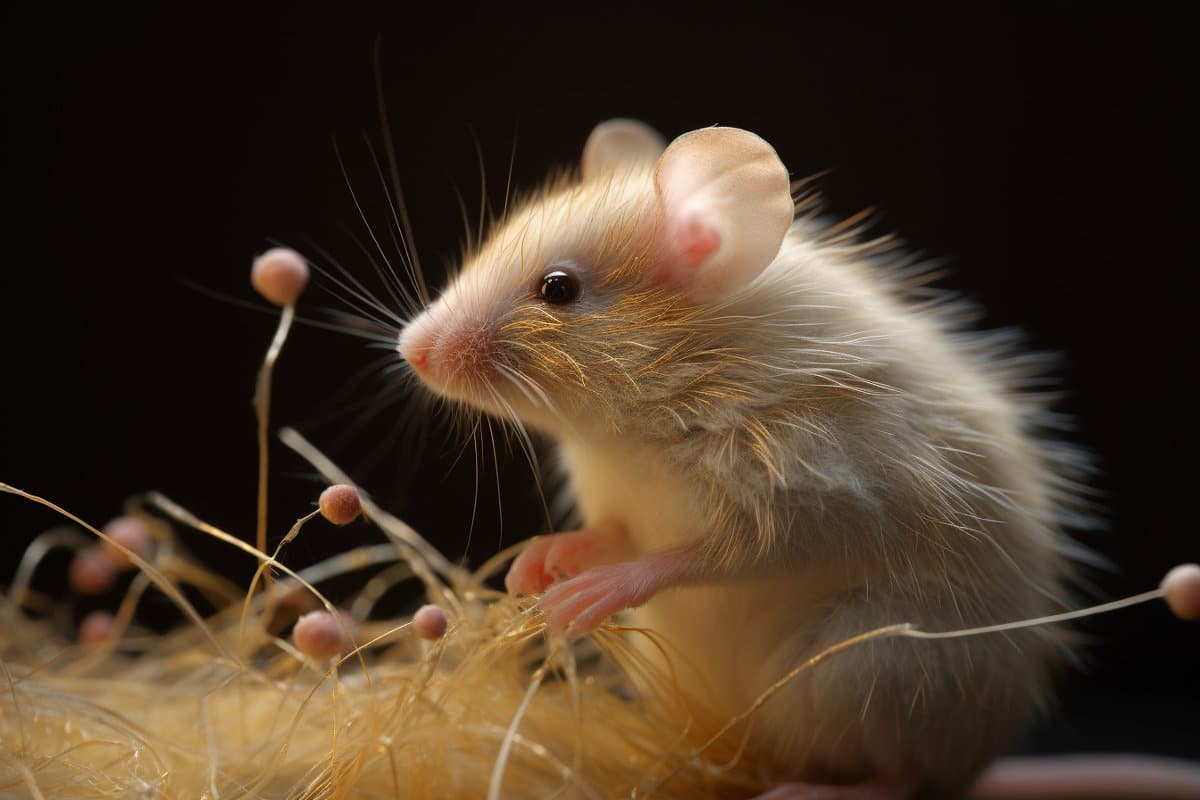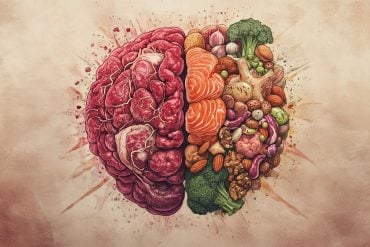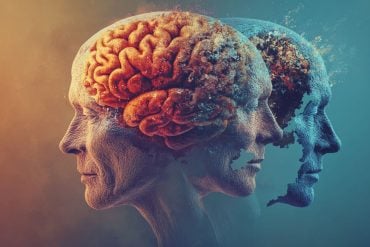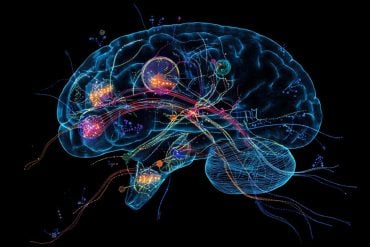Summary: Researchers discovered that, akin to humans, animals have an imagination.
Using a unique combination of virtual reality and a brain-machine interface, they probed a rat’s innermost thoughts. The rats were found to voluntarily generate neural activity patterns in the hippocampus, reflecting spatial memory.
Essentially, these rodents can imagine being in locations or moving objects without physically doing so.
Key Facts:
- The researchers developed a real-time “thought detector” that measures and decodes neural activity in the rat’s hippocampus to determine its spatial thoughts.
- In a virtual reality setup, rats showed they could control their hippocampal activity to imagine navigating to specific locations or moving objects solely by thought.
- This hippocampal activity can be sustained for extended periods, showing a rat’s capacity to focus its thoughts much like humans reliving past events or imagining new scenarios.
Source: HHMI
As humans, we live in our thoughts: from pondering what to make for dinner to daydreaming about our last beach vacation.
Now, researchers at HHMI’s Janelia Research Campus have found that animals also possess an imagination.
A team from the Lee and Harris labs developed a novel system combining virtual reality and a brain-machine interface to probe the rat’s inner thoughts.

They found that, like humans, animals can think about places and objects that aren’t right in front of them, using their thoughts to imagine walking to a location or moving a remote object to a specific spot.
Like humans, when rodents experience places and events, specific neural activity patterns are activated in the hippocampus, an area of the brain responsible for spatial memory. The new study finds rats can voluntarily generate these same activity patterns and do so to recall remote locations distant from their current position.
“The rat can indeed activate the representation of places in the environment without going there,” says Chongxi Lai, a postdoc in the Harris and Lee Labs and first author of a paper describing the new findings. “Even if his physical body is fixed, his spatial thoughts can go to a very remote location.”
This ability to imagine locations away from one’s current position is fundamental to remembering past events and imagining possible future scenarios. Therefore, the new work shows that animals, like humans, possess a form of imagination, according to the study’s authors.
“To imagine is one of the remarkable things that humans can do. Now we have found that animals can do it too, and we found a way to study it,” says Albert Lee, formerly a Group Leader at Janelia and now an HHMI Investigator at Beth Israel Deaconess Medical Center.
A novel brain-machine interface
The project began nine years ago when Lai arrived at Janelia as a graduate student with an idea to test whether an animal could think. His advisor, Janelia Senior Fellow Tim Harris, suggested Lai walk down the hall to chat with Lee, whose lab had similar questions.
Together, the labs worked to develop a system to understand what animals are thinking – a real-time “thought detector” that could measure neural activity and translate what it meant.
The system uses a brain-machine interface (BMI), which provides a direct connection between brain activity and an external device. In the team’s system, the BMI produces a connection between the electrical activity in the rat’s hippocampus and its position in a 360-degree virtual reality arena.
The hippocampus stores mental maps of the world involved in recalling past events and imagining future scenarios. Memory recall involves the generation of specific hippocampal activity patterns related to places and events. But no one knew whether animals could voluntarily control this activity.
The BMI allows the researchers to test whether a rat can activate hippocampal activity to just think about a location in the arena without physically going there – essentially, detecting if the animal is able to imagine going to the location.
Probing the rat’s inner thoughts
Once they developed their system, the researchers had to create the “thought dictionary” that would allow them to decode the rat’s brain signals. This dictionary compiles what activity patterns look like when the rat experiences something – in this case, places in the VR arena.
The rat is harnessed in the VR system, designed by Shinsuke Tanaka, a postdoc in the Lee Lab. As the rat walks on a spherical treadmill, its movements are translated on the 360-degree screen. The rat is rewarded when it navigates to its goal.
At the same time, the BMI system records the rat’s hippocampal activity. The researchers can see which neurons are activated when the rat navigates the arena to reach each goal. These signals provide the basis for a real-time hippocampal BMI, with the brain’s hippocampal activity translated into actions on the screen.
Next, the researchers disconnect the treadmill and reward the rat for reproducing the hippocampal activity pattern associated with a goal location. In this “Jumper” task – named after a 2008 movie of the same name — the BMI translates the animal’s brain activity into motion on the virtual reality screen.
Essentially, the animal uses its thoughts to navigate to the reward by first thinking about where they need to go to get the reward. This thought process is something humans experience regularly. For example, when we’re asked to pick up groceries at a familiar store, we might imagine the locations we will pass along the way before we ever leave the house.
In the second task, the “Jedi” task – a nod to Star Wars – the rat moves an object to a location by thoughts alone. The rat is fixed in a virtual place but “moves” an object to a goal in the VR space by controlling its hippocampal activity, like how a person sitting in their office might imagine taking a cup next to the coffee machine and filling it with coffee. The researchers then changed the location of the goal, requiring the animal to produce activity patterns associated with the new location.
The team found that rats can precisely and flexibly control their hippocampal activity, in the same way humans likely do. The animals are also able to sustain this hippocampal activity, holding their thoughts on a given location for many seconds — a timeframe similar to the one at which humans relive past events or imagine new scenarios.
“The stunning thing is how rats learn to think about that place, and no other place, for a very long period of time, based on our, perhaps naïve, notion of the attention span of a rat,” Harris says.
The research also shows that BMI can be used to probe hippocampal activity, providing a novel system for studying this important brain region. Because BMI is increasingly used in prosthetics, this new work also opens up the possibility of designing novel prosthetic devices based on the same principles, according to the authors.
About this neuroscience and imagination research news
Author: Nanci Bompey
Source: HHMI
Contact: Nanci Bompey – HHMI
Image: The image is credited to Neuroscience News
Original Research: Closed access.
“Volitional activation of remote place representations with a hippocampal brain-machine interface” by Chongxi Lai et al. Science
Abstract
Volitional activation of remote place representations with a hippocampal brain-machine interface
The hippocampus is critical for recollecting and imagining experiences. This is believed to involve voluntarily drawing from hippocampal memory representations of people, events, and places, including maplike representations of familiar environments.
However, whether representations in such “cognitive maps” can be volitionally accessed is unknown. We developed a brain–machine interface to test whether rats can do so by controlling their hippocampal activity in a flexible, goal-directed, and model-based manner.
We found that rats can efficiently navigate or direct objects to arbitrary goal locations within a virtual reality arena solely by activating and sustaining appropriate hippocampal representations of remote places.
This provides insight into the mechanisms underlying episodic memory recall, mental simulation and planning, and imagination and opens up possibilities for high-level neural prosthetics that use hippocampal representations.







